
How to Localize Your App for Korea
South Korea has become one of the world’s biggest app markets with a revenue of $72 million in 2020 and a 11% YOY growth. Localizing your apps and games into Korean then becomes a must to succeed in this market. So, what do you need to take into account when localizing your app/game for South Korea? We’ve gathered all the information and tips you need to know to localize your app/game successfully.
Mobile landscape in Korea
iOS vs Google Play
Contrary to Western markets, Android dominates the South Korean mobile market, which represents nearly 80% of the market. With Android devices dominating the market, Android app stores other than Google Play stand out, especially One Store.
In fact, according to IGAWorks, a local market research agency, the market share of the South Korean app store One Store has reached a record high of 18.4% in August 2020. So, while Google Play remains the most popular and used Android store in Korea, looking at other local Android app stores is worthwhile.
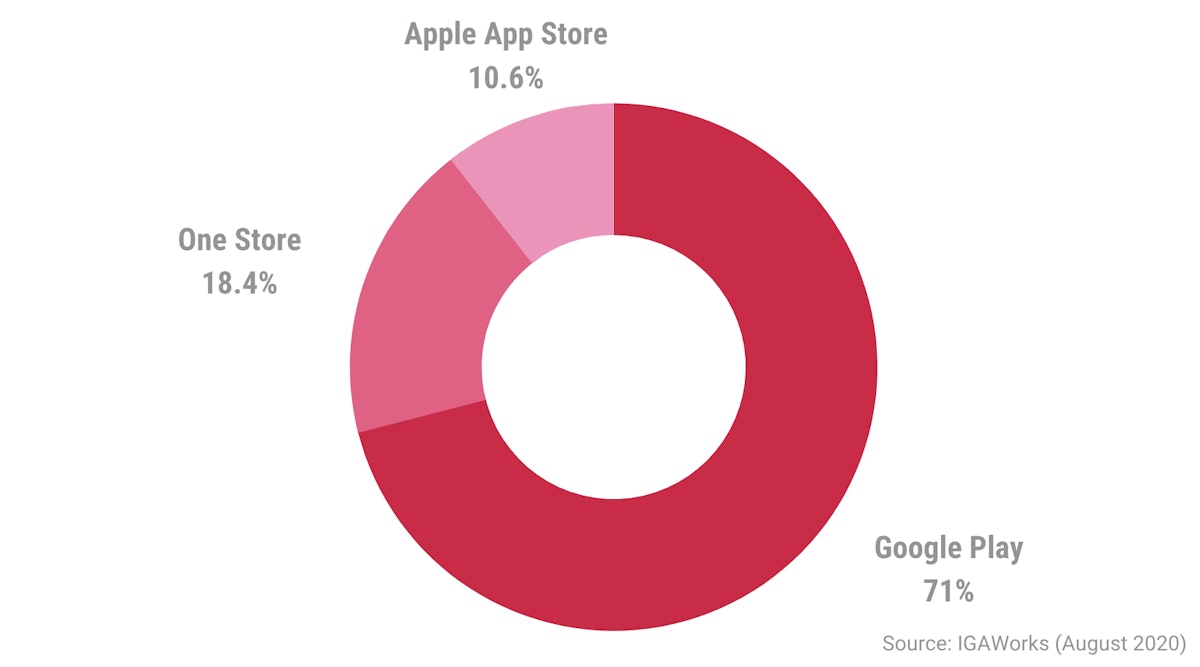
As for iOS, it still represents a quite significant portion of Korean users. If you are thinking about launching your app/game in Korea, we suggest to make it available for both Android and iOS, but keep in mind that Android should be the priority.
Top apps & games in Korea
Local apps and games dominate the market in South Korea.
In fact, when looking at the top charts, we see mostly local developers, such as Netmarble, NEXON Company, KAKAO, NAVER Corp., 4399 KOREA, Highbrow, and others prevailing.
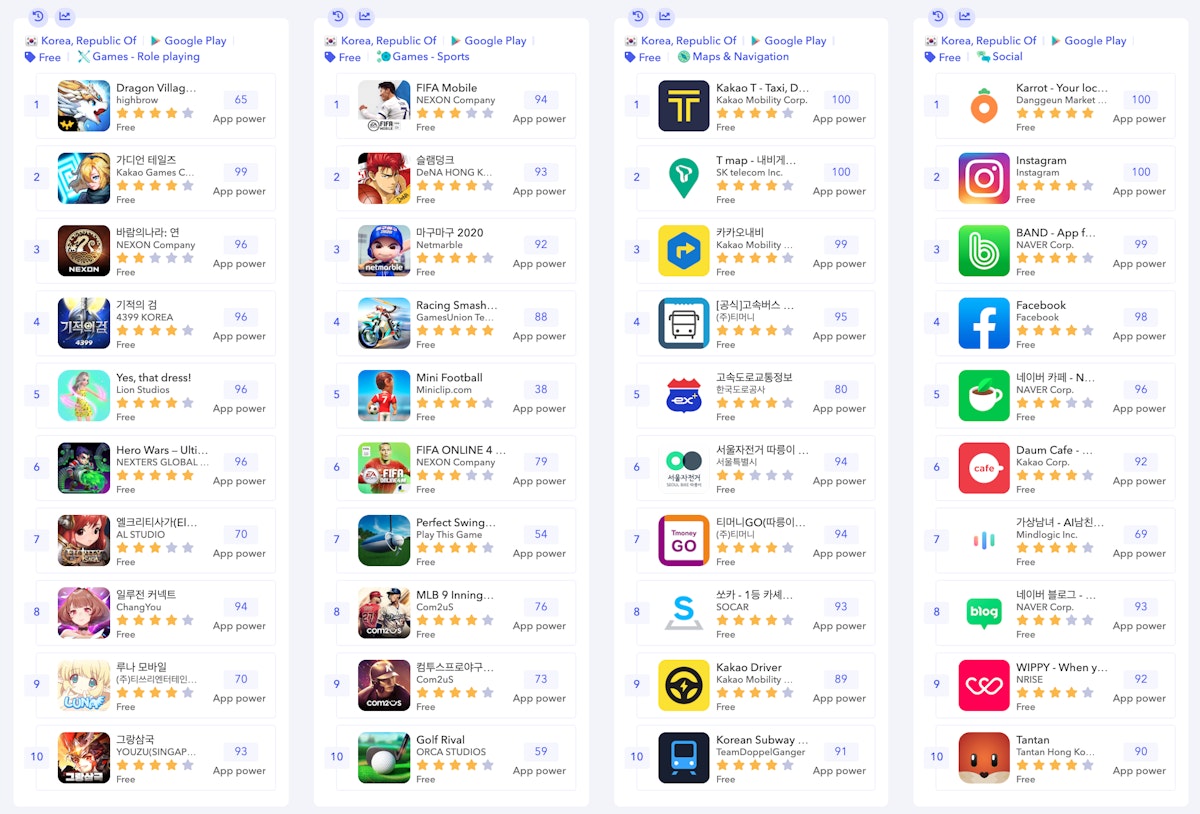
Still, this domination by local developers does not mean that Western apps cannot succeed in South Korea. Plenty of foreign studios have had success from localizing their apps/games in the South Korean market, including King, Playrix, and Supercell with games such as Candy Crush Saga, Homescapes, and Clash Royale.

In terms of app preferences, South Koreans lean more toward shopping, finance, productivity apps, as well as dating apps (but this category is mostly dominated by local developers). There is also a growing interest for fitness apps and language learning apps, especially the ones for English.
South Korea is the #4 biggest game market worldwide with $5.6 billion in game revenue. The most popular game genres for men are RPG, more particularly MMORPG, action, and sports games for which the interest continues to grow. On the other hand, women tend to have a preference for puzzle, board, and casual games.
The South Korean market represents a great opportunity for mobile developers, especially game developers. But it is a very competitive market dominated by local developers, and Korean users have high expectations. So, it is necessary to not only translate your app/game but to adapt it to the local content trends and cultural nuances to boost users’ interest.
To make it easy for you, we have listed the elements to consider when localizing your app/game for Korea.
Language
A majority of Korean app store users are moderately proficient in English, so they prefer the games/app to be in their native language.
- Local app developers hold a strong position in both apps and games. Accustomed to localized content, Korean users show clear preference for such offerings. Therefore, if you want to compete effectively with these local developers and attract a dedicated user base, it’s crucial to localize your app. Particularly for games, localization can significantly enhance user engagement by making them feel more connected to the storyline.
- Turning to the specifics of the Korean language, the alphabet, known as Hangul, is written from left to right, akin to Latin languages. Interestingly, one Hangul character generally occupies the space equivalent to two English characters, but it still counts as a single character. This brings us to an important point about translation: if your translated content doesn’t fit, it’s not advisable to simply adjust the font size. Why? Because it could compromise readability.
Considering the choice of fonts for Hangul, Dodum and Nanum stand out due to their high readability. That said, don’t limit yourself to these options. You can explore other fonts as well, provided they offer full support for Korean characters.
In summary, localizing your app for the Korean market involves taking into account both cultural and linguistic factors. By doing so, you’ll be better equipped to compete with local developers and win over Korean users.

- Hangul, with its unique grammatical structure, various tones, and nuances, presents translation challenges. Word order is crucial. For instance, instead of saying, “Select 4 out of 10 gadgets,” we should say, “Out of 10 gadgets, select 4,” as the larger number precedes. So, we advise collaborating with a native speaker for translation to ensure optimal tone, word order, and font selection.
Metadata
1. Title & subtitle/short description
We highly recommend to translate your app title when you enter the Korean market. In fact, 75% of the top 25 apps/games in both the App Store and Google Play in Korea have their name in Korean or in both Korean and English separated either by a dash, a space, or with a language version in parentheses.
 As opposed to the Chinese market, some popular international brands/games such as Instagram, Netflix, YouTube, Google, Minecraft, Pokemon Go, and others have kept their original names in English. But while the name is kept in English, they have all localized their subtitles and short descriptions to Korean. In fact, as mentioned earlier, Koreans prefer apps and games in their own language, so it is recommended to translate your subtitle/short description to Korean.
As opposed to the Chinese market, some popular international brands/games such as Instagram, Netflix, YouTube, Google, Minecraft, Pokemon Go, and others have kept their original names in English. But while the name is kept in English, they have all localized their subtitles and short descriptions to Korean. In fact, as mentioned earlier, Koreans prefer apps and games in their own language, so it is recommended to translate your subtitle/short description to Korean.

2. Keyword field/long description
Koreans generally favor apps and games in their native language. However, they are comfortable with certain English words like “ok” and “cool” remaining untranslated. Koreans have a moderate proficiency in English. Including English keywords like “game”, “puzzle”, “movie”, “shopping”, “watch”, and “play” in the iOS keyword field can drive significant traffic. So, it’s worthwhile to mix Korean and English keywords in the keyword string for Apple.
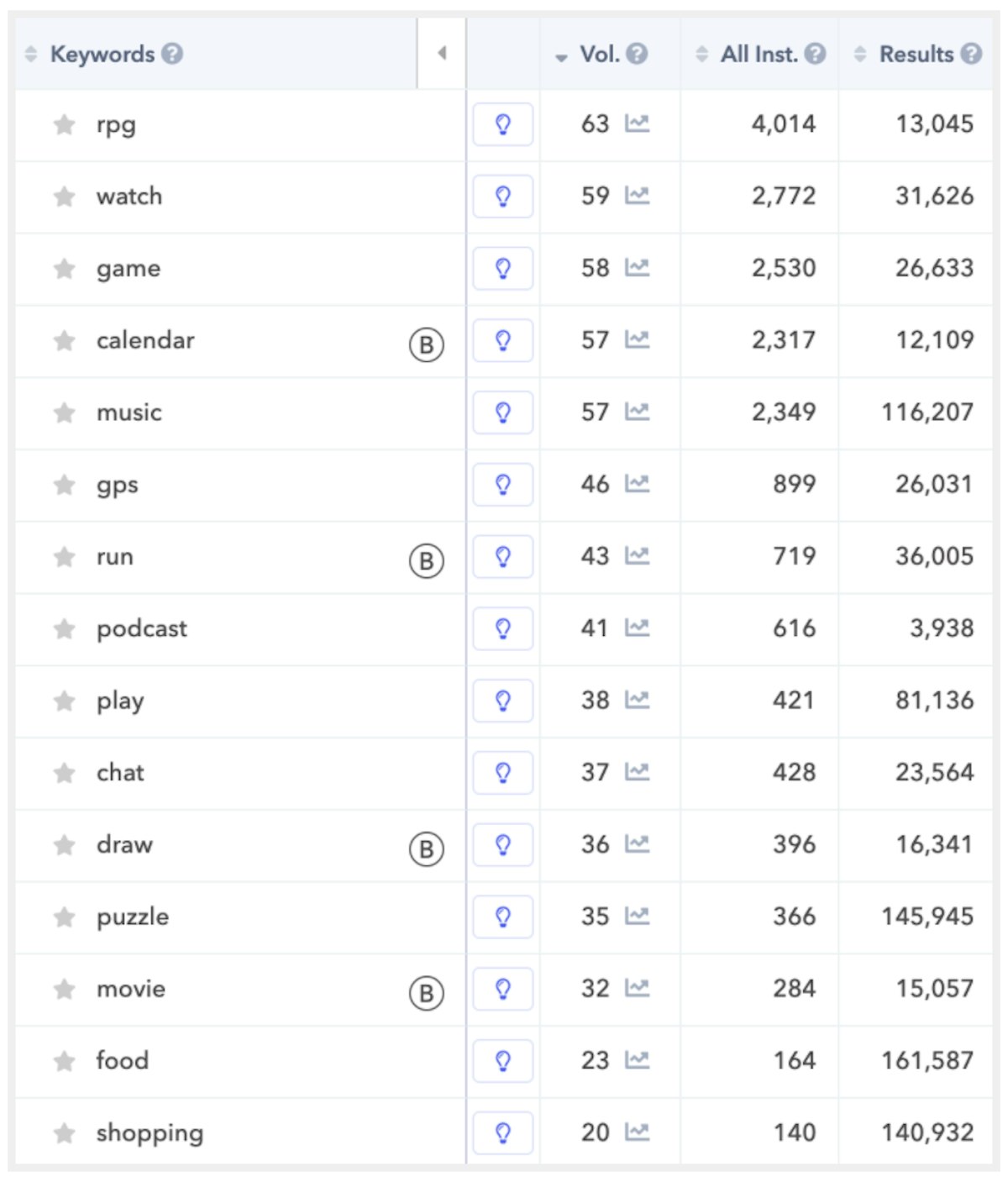
For Android, we recommend using Hangul in the long description despite its low read rate, as Koreans prefer their native language. However, it’s crucial to achieve the right keyword density for high volume, relevant keywords for better ranking and association with similar apps/games.
For high volume English keywords, consider targeting them in visible metadata like title and subtitle, but only if your app/game converts better in English than Korean. Use Apple Search Ads on iOS to test which keyword version works best in the metadata.
Read through these steps to ensure your app gets the organic visibility it deserves
Creatives
Koreans lean toward complex, anime-style creatives in icons, screenshots, videos, and feature graphics. Images imbued with Korean culture draw Koreans effectively. App localization and use of Asian models enhance appeal.
Similarly, in gaming, the popular aegyo style, akin to Japan’s kawai, captivates Korean users. Aegyo involves cute, childlike actions and expressions, which you can integrate into game characters and plots for added appeal. So consider incorporating anime elements or Asian models in your creative assets to attract more Korean users.
1. Icon
Koreans enjoy games with robust character collection and leveling systems, typical of RPGs. Hence, game icons often depict a character. An analysis of the top ten games in the Games-Sport category reveals that 8 prominently feature a character in their icon.
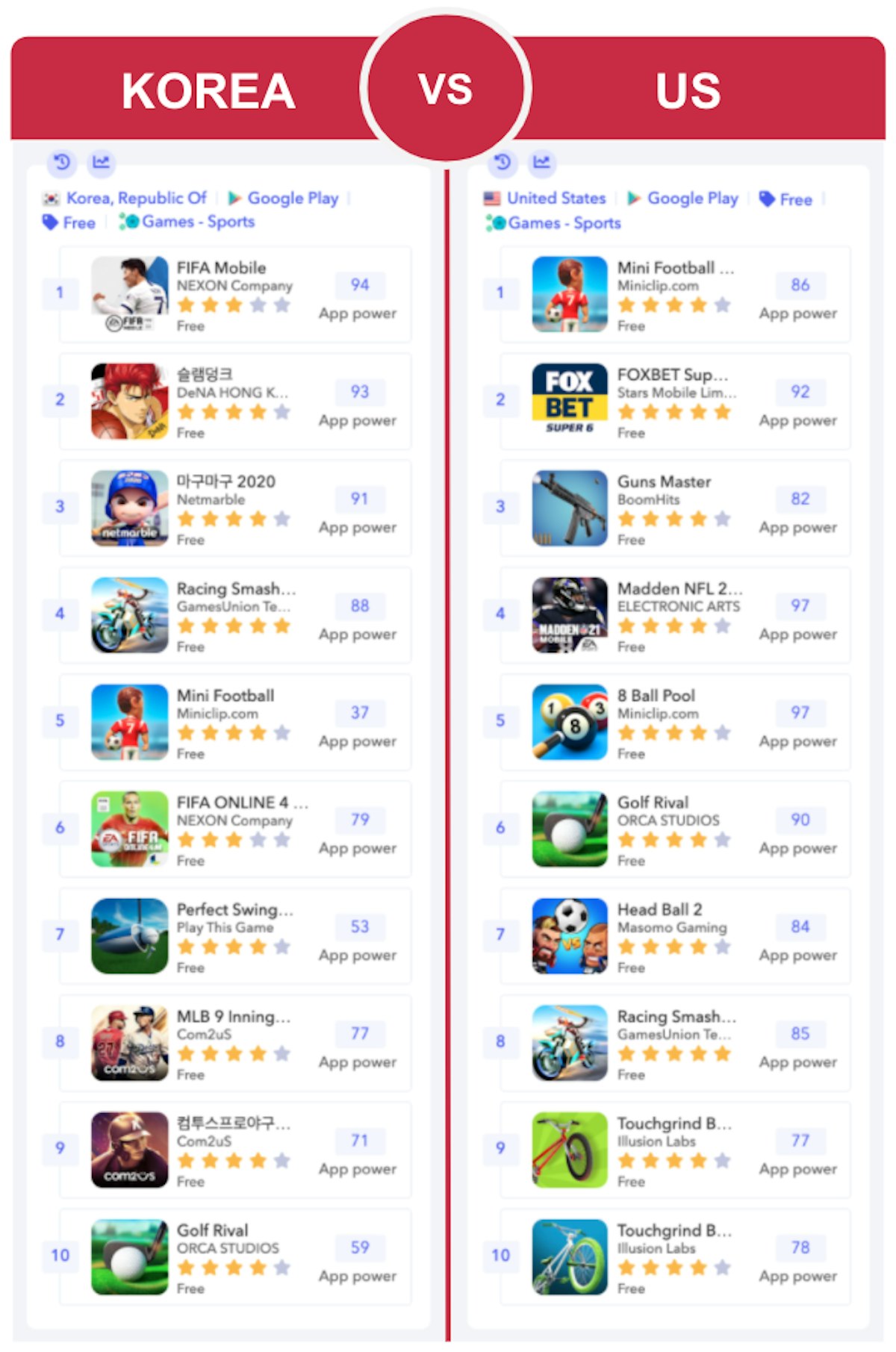
2. Screenshots
When designing your screenshots of apps for Korea, keep in mind the significance of the color.
Certain colors, like white, green/blue, and yellow, carry positive connotations, while others, such as black and red, are seen negatively, despite being lucky in China. Interestingly, many Korean apps utilize the color white (symbolizes purity, innocence, and restraint) for their screenshot backgrounds.
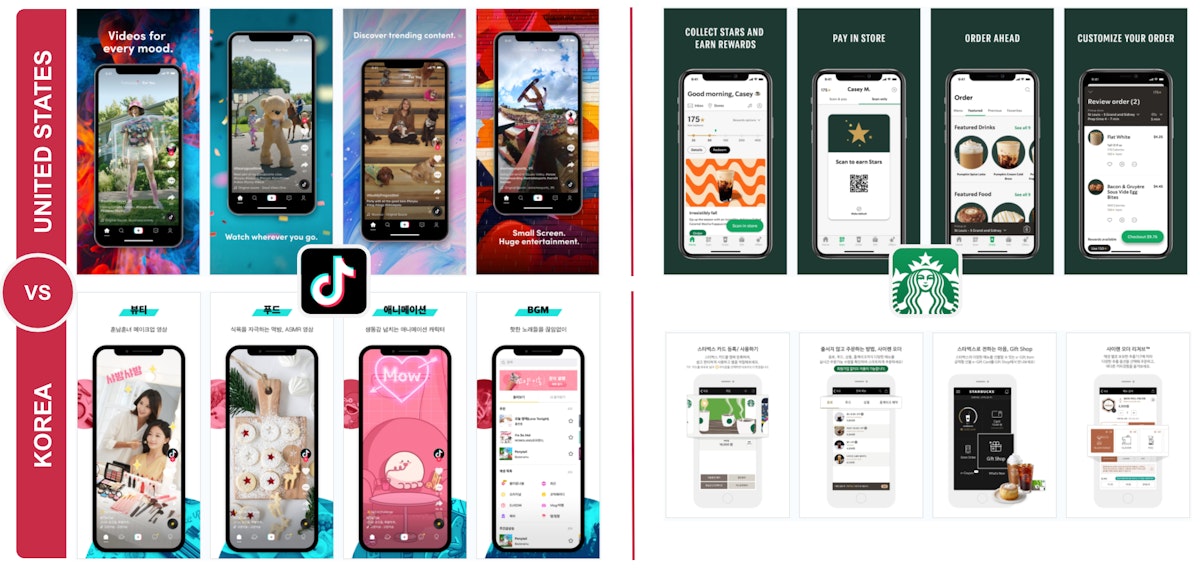
Also, a critical element to make sure to localize in screenshots is the currency.
- Use the Korean won (₩ or 원) and not foreign currencies such as $ or €, and preferably not the acronym KRW. The price presentation should be straightforward, with no decimal points or digits for clarity and user convenience. For example, use ₩ 2,200 or 2,200 원 rather than ₩ 2220.00.
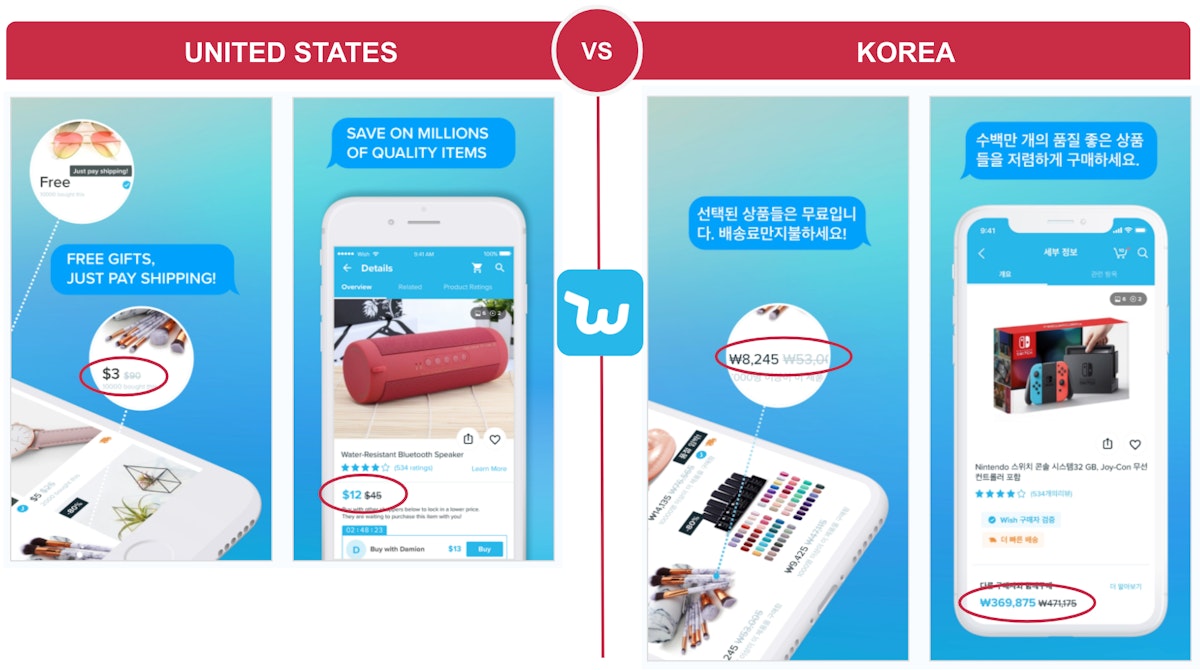
- When localizing your app screenshots in Korea, use Korean/Asian models. Making the app feel like it’s tailored for the Korean market enhances its appeal to users.
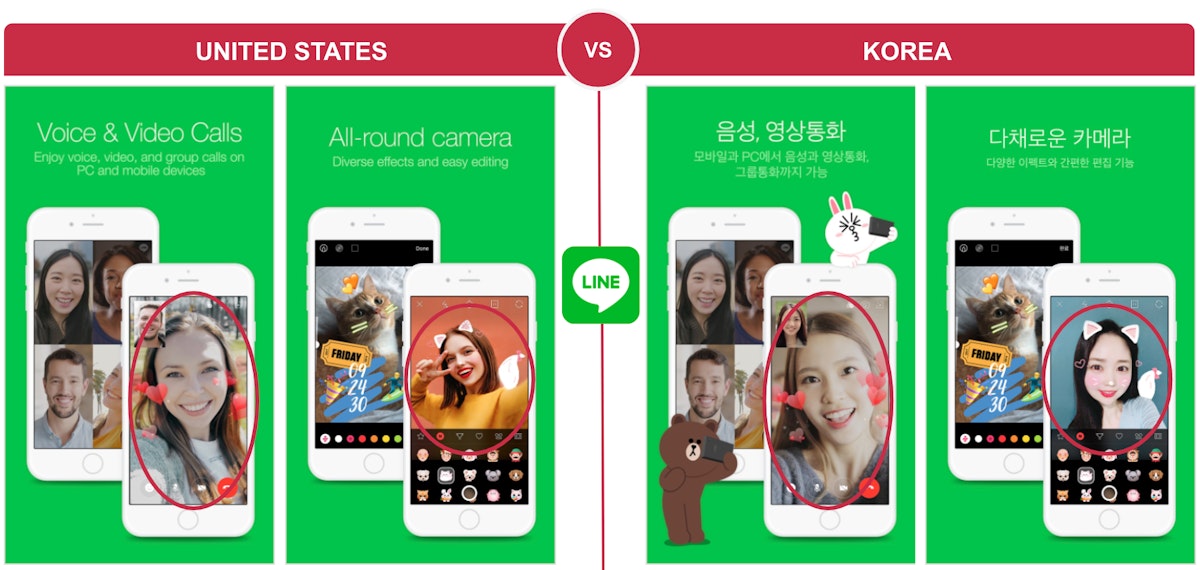
- In contrast to the West’s preference for factual content, Korean game screenshots often showcase intense character designs or action scenes. Korean gamers favor games with significant character collection and leveling systems, like in RPGs – the most favored genre. Hence, striking images of various in-game characters and levels are more captivating.
Use these expert tips to design the best app screenshots

3. Video
High-quality in-game graphics and a wide range of characters and levels attract Korean users. Therefore, highlights these elements in your app preview videos.
For instance, the Korean preview for Angry Bird 2 is similar to the U.S version, but it includes foreground characters with overlaid texts.

Expert Tip
For success in the Korean market, it’s essential to translate not only your app/game and metadata but also to give your images/creatives a Korean touch. Specifically for games, localization positions you to compete with local developers and enhances gamer engagement with your storyline.Take a look at out step-by-step guide to app localization
Bonus tips to localize your app for Korea
1. Use emojis/stickers
Emojis and stickers are highly effective in Korea, much like Japan, largely due to the countries’ shared history of cuteness. In fact, Korea’s online culture has, for a long time, placed a strong emphasis on visuals and characterization. So including special emojis to your UI campaigns or app page can have an impact on your conversion rates.
2. Social media login/messenger apps are popular in Korea
Social media login/messenger apps are a must for your game to succeed in Korea.
Most top Korean apps or games provide sign-in options via popular local social networks like Google, Naver, Kakao, and Facebook. These networks often have messaging apps integrated in them. This social aspect is crucial as it enables apps, particularly games, to readily connect with a substantial user base.
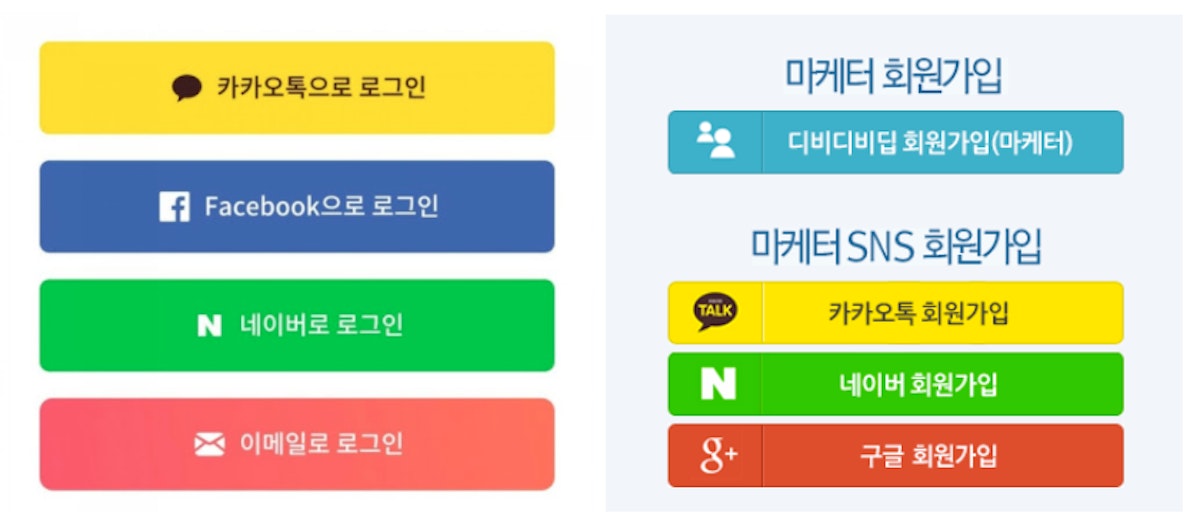
3. Leverage Google Play promotional content
Google Play’s promotional content allows you to highlight in-app content, major updates, or temporary events in your app/game across the store. This boosts user engagement, stimulates sales, and minimizes player drop-off. Typically, these updates occur biweekly, monthly, or quarterly, featuring in-game events or new content.
To thrive in Korea, it’s crucial to regularly update and promote your game’s promotional content on social channels.
Holidays present excellent opportunities for new in-game events as smartphone usage often increases, leading to profit growth from in-game purchases.
- Key Korean holidays include Seollal (Lunar New Year, 24 – 26 January) and Chuseok (Korean Thanksgiving Day, 30 September – 2 October).
- Some Western holidays are also important in Korea, including New Year and Christmas.
4. Avoid sensitive topics
Unlike China, South Korea is a pretty liberal country in terms of freedom of expression and speech. Still, some topics are negatively received in the Korean culture, such as violence and cruelty. Also, politics/politically sensitive histories, especially related to the Korean war and relationships with China and Japan, are best to be avoided.
For example, Age of Empires had to release an update only for Korean users and change the course of history in its game because the Ministry of Information in Korea claimed that at no point in history do the armed Japanese forces invade the Korean Peninsula and seize power, like it was displayed in the game, even though historical documents indicate otherwise.
If you want to learn more about how AppTweak can help you with the localization process, don’t hesitate to start a 7-day free trial!



 Ian Pernia
Ian Pernia

 Justin Duckers
Justin Duckers



